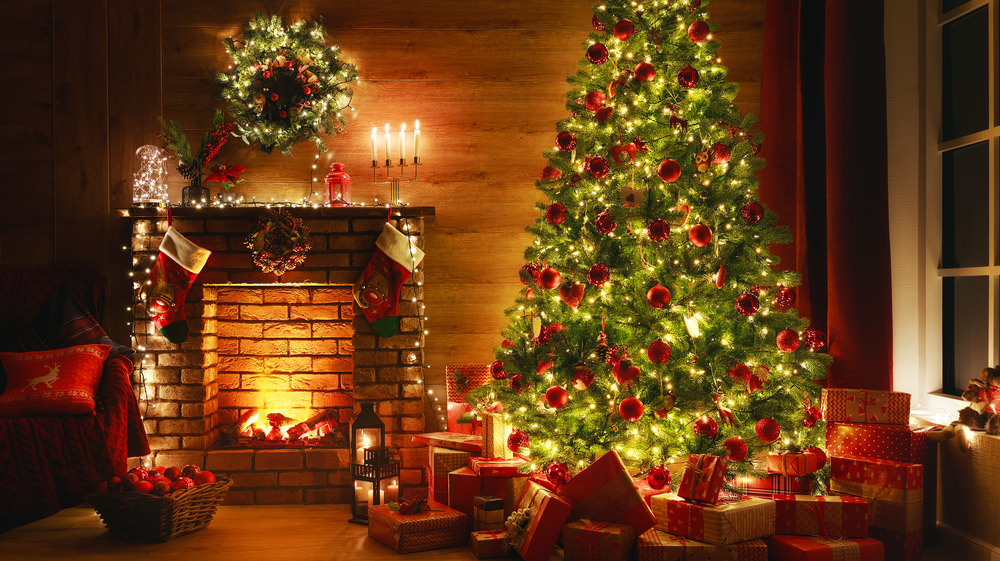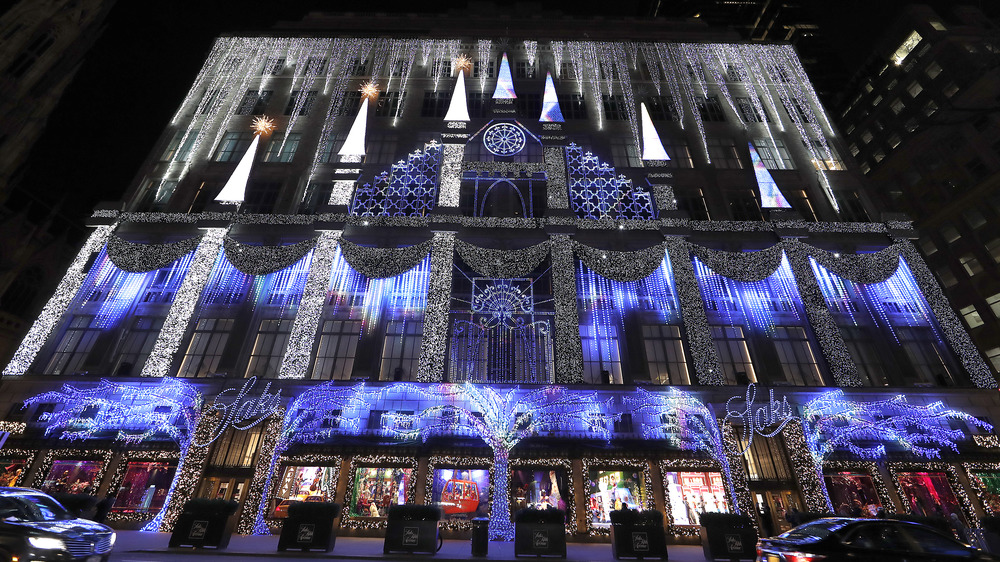The Origin Of Christmas Lights Explained
Christmas lights twinkling on a tree, or illuminating a building, evoke such a feeling of nostalgia and warmth that sometimes people overdo it. Even so, nothing makes you feel like the holidays are upon us — or past us, when they're still up after January — like Christmas lights suddenly appearing everywhere. People have many theories about Christmas lights and why we put them up. Here's the history.
Before the advent of electric lights, people used to put candles on their Christmas trees, explained Popular Mechanics. The tradition was brought to England by Prince Albert, Queen Victoria's husband, who grew up in Germany. A magazine published an illustration of the Queen's family gathered around a tree with candles adorning it. The British went gaga, and both Christmas trees and their lights became very popular. After another magazine republished (with some changes) the picture in the United States, Americans also began the tradition — one of several popularized during the Victorian era.
Of course, placing lit candles on a tree is a huge fire hazard, so, as Gizmodo pointed out, people would put up the tree and the candles for just a few days. Before the tree dries out, it's taken down to avoid disaster. Accidents did happen, however, and by 1908, some insurance companies refused to pay out claims for Christmas tree fire damage. Everyone knew how dangerous it was to mix candles with Christmas trees, but there was no alternative. Enter Thomas Edison and the Edison Light Company.
The first Christmas lights were a marketing stunt
Thomas Edison, the inventor (and, more often, credit-taker for other people's inventions), needed to convince the public that electric lights were the future. The light bulb had been on the market for some time, but had yet to take the world by storm.
One of Edison's executives, Edward Johnson, had a brilliant idea. According to Smithsonian Magazine, Johnson thought he could string a couple of the bulbs together and display it on his Christmas tree, which was displayed in a street-facing window in his townhouse along Fifth Avenue in New York. He knew it was a highly trafficked area, and if people saw his light display, they'd surely stop by. Johnson put together different colored lights, lit up his tree, and as hoped, people gawked. The local press mostly ignored it, but it did get a small write-up in a Detroit paper. It was enough to get the attention of many wealthy Americans, who started buying up Edison's bulbs. At $12 a pop ($300 in today's money), electric lights were out of reach for many.
Eventually, light bulb prices fell. In 1895, President Grover Cleveland put up the first Christmas tree with lights in the White House. By 1925, other companies manufactured Christmas lights. In time, Christmas lights became safer to use, and cheaper.
And this is how we got to the ubiquitousness of Christmas lights. (You can leave your lights up until January. It's your house. You make the rules.)

